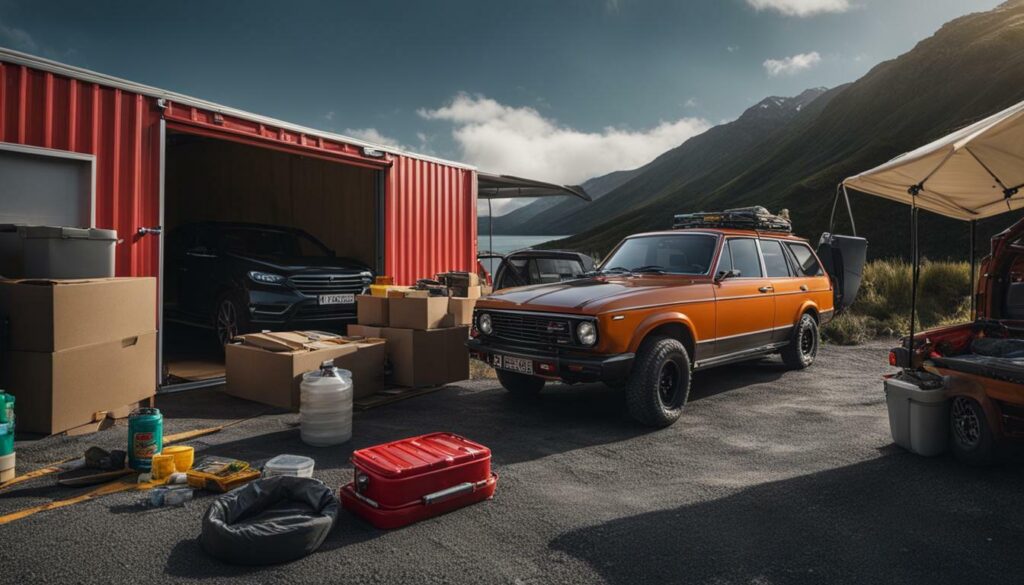As a journalist covering New Zealand’s unpredictable natural disasters, I can’t stress enough the importance of being prepared. When you’re on the road, you never know when Mother Nature will strike. Your car is your lifeline, so it’s crucial to make sure it’s ready to face any challenge. That’s why I’ve put together this comprehensive guide on preparing your car for natural disasters in New Zealand.
In this guide, you’ll find tips and strategies for ensuring your car’s safety during natural disasters, as well as a comprehensive car preparedness checklist. We’ll also cover the essential items you should have in your emergency car kit. By following these guidelines, you’ll be better equipped to face any natural disasters that come your way.
- It’s crucial to prepare your car for natural disasters in New Zealand, given the country’s unpredictable weather conditions.
- Investing in an emergency car kit and ensuring your vehicle is well-maintained can help minimize risks and protect your car during natural disasters.
- Following a comprehensive car preparedness checklist can help ensure you’re ready for any challenge that comes your way.
- When on the road during a natural disaster, prioritize your safety and the safety of your passengers.
- By staying informed and proactive, you can better navigate the challenges of natural disasters on the road.
Car Safety During Natural Disasters: Tips and Strategies
When it comes to natural disasters, your car can be both a blessing and a curse. On the one hand, it can help you evacuate quickly and safely. On the other, it can become a liability if it fails during an emergency or gets caught in hazardous conditions. Here are some tips and strategies to ensure your car is prepared for the worst:
Protecting Your Car During Natural Disasters
The first step in ensuring your car’s safety during a natural disaster is to be aware of the potential hazards in your area. For instance, New Zealand is prone to earthquakes, floods, and landslides. Understanding the risks can help you take preventative measures and make informed decisions.
Here are some additional tips for protecting your car during natural disasters:
- Regularly check your tires, brakes, and other essential systems for wear and tear. Address any issues promptly to avoid breakdowns during an emergency.
- Store your car in a safe place if possible, such as a garage or covered parking lot. If this is not an option, park in a location that minimizes the risk of damage from falling debris, flooding, or other hazards.
- Cover your car with a tarp or other protective material if you anticipate extreme weather conditions such as hail or heavy rain.
- Follow evacuation orders and avoid driving through floodwaters or other dangerous areas. If you do need to drive, take it slow and cautiously to avoid accidents.
New Zealand Natural Disaster Car Preparation
In addition to the tips above, there are some measures specific to New Zealand’s natural disaster risks that you may want to consider. For example:
- Keep a shovel, chains, and other equipment in your car to help you navigate snow, ice, or landslides.
- Make sure you have enough fuel in your car in case of road closures or traffic jams.
- Keep emergency supplies, such as warm clothing, blankets, and food, in your car in case you get stranded or need to evacuate quickly.
Conclusion
By taking these tips and strategies into account, you can help ensure your car is as safe as possible during a natural disaster. However, it’s important to remember that no amount of preparation can guarantee complete safety. Always stay informed and prepared, and prioritize your well-being and that of your passengers.
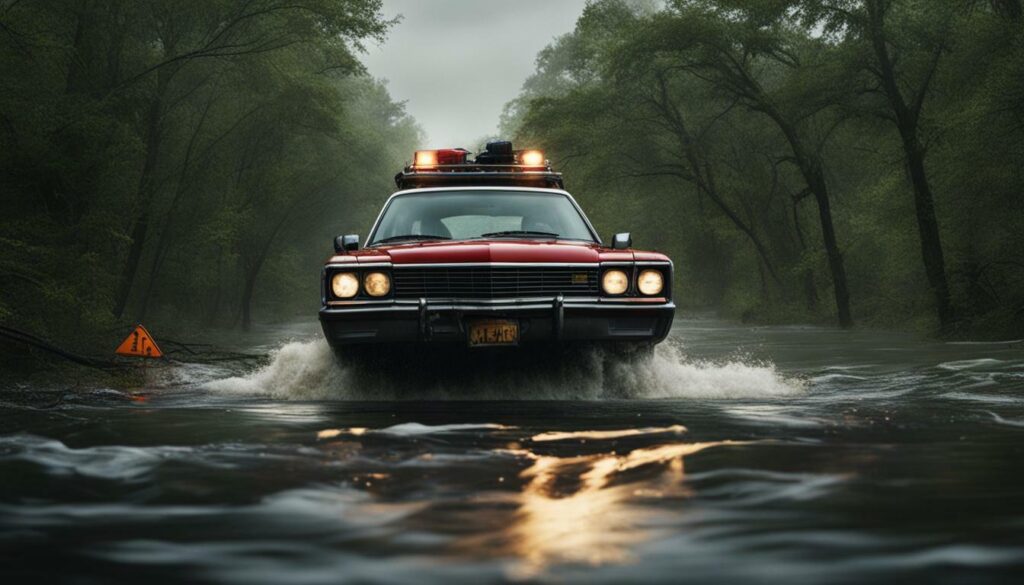
Building Your Emergency Car Kit: Essential Items to Include
When it comes to preparing your vehicle for emergencies and natural disasters in New Zealand, having an emergency car kit is crucial. The kit should contain essential items that can help you survive in case of an emergency.
Here are some of the essential items to include in your emergency car kit:
- First Aid Kit: It should contain all the necessary medical supplies for treating injuries.
- Water: Ensure you have enough water to last you and your passengers for at least three days.
- Food: Non-perishable food such as energy bars, canned goods, and dried fruits should be included.
- Blankets: Warm blankets can help keep you comfortable in cold weather conditions.
- Flashlights: They can help illuminate dark areas and signal for help.
- Batteries: Carry extra batteries for your flashlights and other devices that require batteries.
- Tools: A basic toolkit including pliers, screwdrivers, and a wrench can be helpful for car repairs.
- Portable Charger: Keep a portable charger to ensure your mobile device stays charged in case of an emergency.
- Maps: Keep physical maps of the area in your emergency car kit in case you lose cell service and GPS.
Remember to regularly check and update your emergency car kit. Ensure all items are in working condition and not expired. By having these essential items in your emergency car kit, you can better protect yourself and your passengers in case of an emergency.
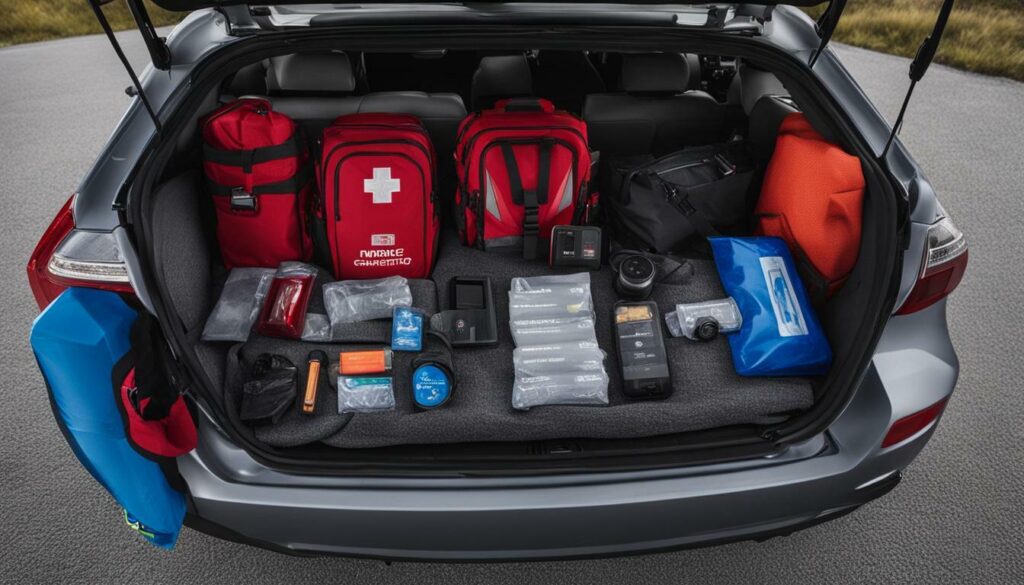
As a responsible driver in New Zealand, you must know how to prepare your car for natural disasters. Having a well-thought-out car preparedness checklist is essential to ensure that your vehicle is ready to face any emergency situation.
Below is a comprehensive car preparedness checklist that covers everything you need to know.
Regular Maintenance Tasks
These are regular maintenance tasks that you should perform to keep your vehicle running smoothly:
| Task | Frequency |
|---|---|
| Check tire pressure and condition | Monthly |
| Replace windshield wipers | Every 6 months |
| Regularly check brakes and brake fluid level | Every 6 months |
| Check oil level and change oil | As recommended by the manufacturer |
Emergency Items
These are items that you should keep in your car in case of emergencies:
- First Aid kit
- Water and non-perishable food items
- Blankets or warm clothing
- Flashlight and extra batteries
- Jumper cables
- Emergency radio
- Mobile phone charger
- Spare tire and jack
- Toolkit
Specific Actions Before, During, and After Natural Disasters
These are specific actions that you should take before, during, and after natural disasters:
Before
- Check the weather forecast and avoid driving during severe weather conditions if possible
- Fill up your gas tank before a potential disaster
- Charge your phone and emergency radio beforehand
- Secure loose items in your car to prevent them from becoming hazards during a disaster
During
- Stay in your car, unless you are instructed to evacuate
- Keep your seatbelt fastened and doors locked
- Avoid driving through flood waters or downed power lines
- Switch off your engine and turn on your hazard lights
After
- Stay informed on the latest updates and road closures
- Do not attempt to drive through debris or downed power lines
- Check the condition of your vehicle before driving it
- Report any damages to your insurance company as soon as possible
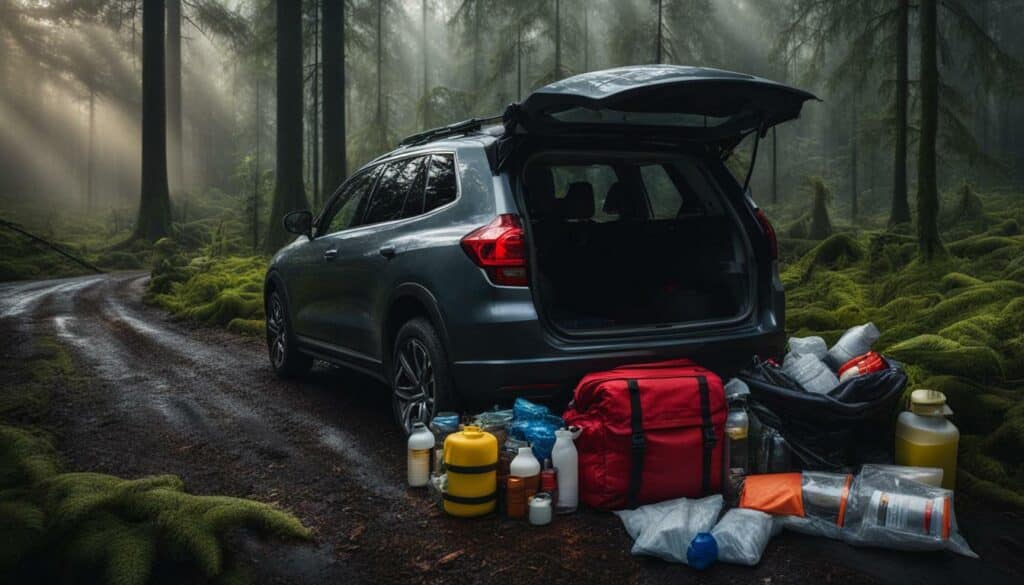
By following this car preparedness checklist, you can make sure that you are ready to face any natural disaster that comes your way on the road. Stay safe and be prepared.
Surviving Natural Disasters on the Road: A Guide for Drivers
Driving during natural disasters can be an extremely daunting experience. However, with proper preparation and knowledge, you can significantly increase your chances of staying safe and minimizing damage to your vehicle. Here are some tips for surviving natural disasters on the road:
Stay Informed
Before hitting the road, familiarize yourself with the latest weather reports and updates on any potential natural disasters in the area. Keep an eye on official channels, such as the New Zealand Civil Defence Emergency Management website, for accurate and up-to-date information.
Additionally, consider using real-time traffic apps or GPS to help you navigate the safest and quickest route to your destination.
Be Prepared
Ensure that your car is fully prepared for any natural disasters by following the car preparedness checklist provided in this guide. Have your emergency car kit readily available, including essentials such as water, non-perishable food, a first aid kit, and warm clothing.
Keep in mind that the type of natural disaster you may encounter will require different preparations. For example, in the case of a flood, keep sandbags or other materials to block floodwaters from entering your vehicle.
Drive Carefully
When driving in hazardous conditions, always prioritize safety over speed. Reduce your speed and leave plenty of space between you and other vehicles.
During heavy rain or flooding, avoid crossing any moving water or flooded areas. If you must cross, do so slowly and carefully.
Know When to Stop
If conditions become too dangerous, do not hesitate to pull over and wait out the storm or natural disaster. Seek out a safe place to park, such as a higher ground, and turn off your engine to conserve fuel.
Remember, your safety and the safety of your passengers always come first.
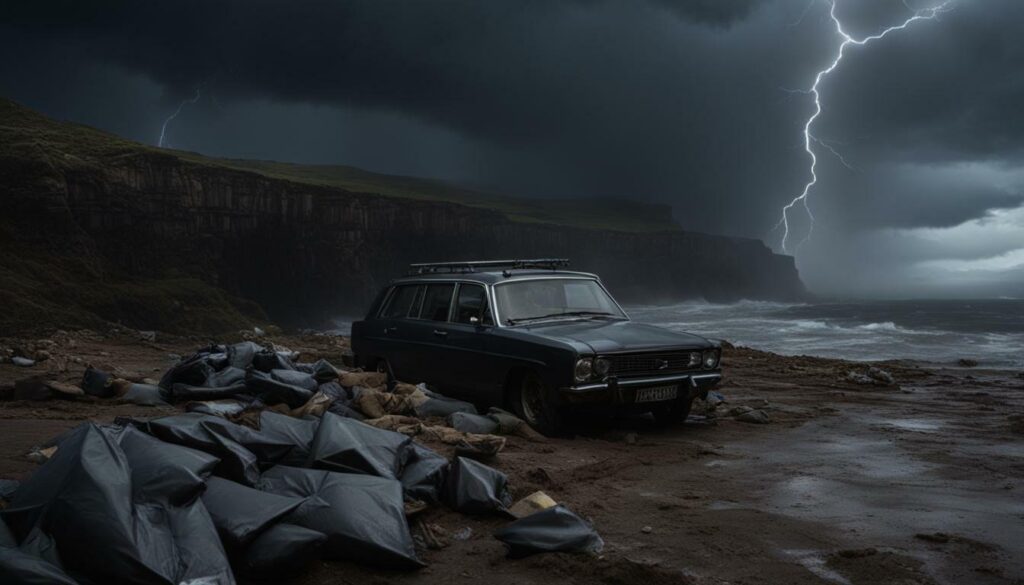
While natural disasters can be unpredictable and daunting, by following the tips and strategies provided in this guide, you can significantly improve your chances of staying safe and minimizing damage to your vehicle. Remember to be prepared, stay informed, drive carefully, and prioritize safety at all times. By doing so, you can confidently navigate any natural disaster on the road.
Conclusion
In conclusion, preparing your car for natural disasters is crucial to your safety on the road, especially in New Zealand where unpredictable weather events are common. The information provided in this guide offers valuable insights and tips for protecting both yourself and your vehicle.
Remember to stay informed about weather conditions and natural disasters in your area, and keep your emergency car kit up to date with essential items. Following the car preparedness checklist can set you up for success in handling any emergency situation that may arise.
While it may seem like a hassle to take these precautions, it is essential to prioritize your safety and that of your passengers. Investing time and effort in preparing your car for natural disasters can save lives and prevent property damage.
Thank you for taking the time to read this guide, and I hope it has been informative and helpful in preparing you for any natural disasters you may encounter on New Zealand’s roads.
FAQ
What are some tips for protecting my car during natural disasters?
Some tips for protecting your car during natural disasters include parking in a safe location away from trees, securing loose objects around your vehicle, and ensuring your car is in good working condition.
What should I include in my emergency car kit?
Essential items to include in your emergency car kit are a first aid kit, flashlight, spare tire, jumper cables, and non-perishable food and water.
What should be on my car preparedness checklist?
Your car preparedness checklist should include tasks such as regularly checking your tires, maintaining a full tank of gas, and keeping important documents and contact numbers handy.
What types of natural disasters should I be prepared for while driving in New Zealand?
In New Zealand, it is important to be prepared for natural disasters such as earthquakes, floods, and landslides, as they can significantly impact road safety.
